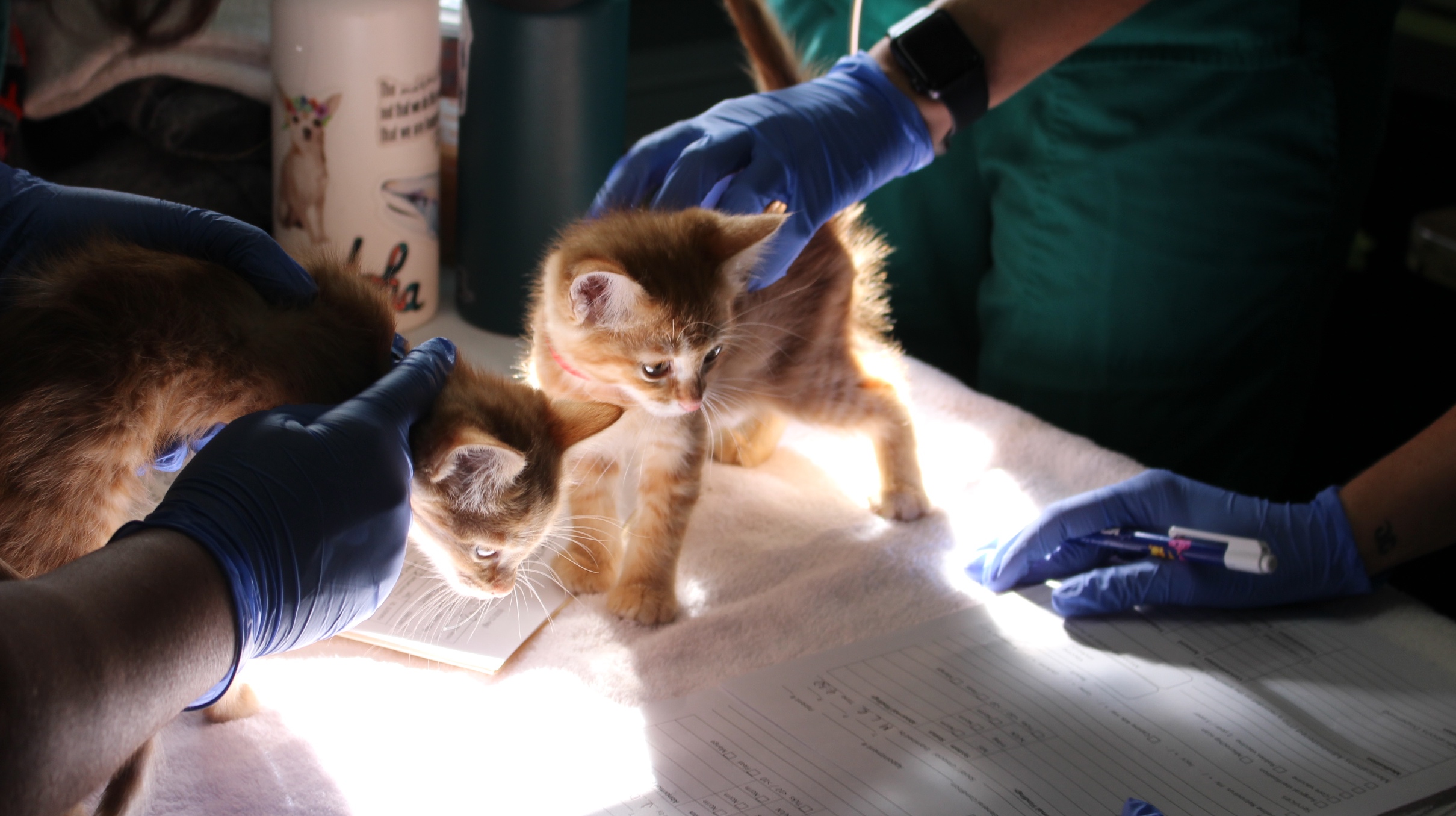This spring, the Verde Valley Humane Society found them- selves with over 100 stray kittens. Red Rose Inspiration for Animals had over 160 this fall.
For an area that features so many unclaimed cats and dogs every year, the issue of breeding pets is a real problem.
The shelters try to make sure that all pets that come through their doors are spayed or neutered in order to stop the proliferation of even more baby animals without homes in the area, but the rescue organizations often lack the resources to ensure that.
On Saturday, Oct. 19, veterinary students from Midwestern University came in their school’s mobile health van to spend a dayhelping out the local organizations, providing free spaying and neutering to the Verde Valley Humane Society, Humane Society of Sedona and Red Rose Inspiration for Animals for as many cats and dogs as they could get done in the day.
According to Dr. Rachael Kreisler, assistant professor of Shelter Medicine at Midwestern, who brought her students with her on Saturday, the initiative not only helped the nonprofits in the area, but also taught the students valuable skills for the future.
“It’s really powerful,” Kreisler said. “It means that our students graduate having done several hundred surgeries, which is a pretty big deal. Up here there’s not a lot of spay or neuter vets, so I’m hoping they see where they can be helpful.”
The visit by the veterinarystudents was organized by the Northern Arizona Animal Welfare Coalition, a new organization in the Verde Valley aimed at coordinating between the different animal nonprofits in the area. Some of the funding was provided by Petsmart charities.
According to NAAWC President Rebecca Poling, the group is aimed at helping the groups to work together, including allowing for bulk purchasing, educating the public on their behalf, legal aid, and events like Saturday’s providing spay and neuter assistance.
“There’s not quite enough capacity in the Verde Valley to handle spay and neuter for all of the privately owned animals, as well as all those in the shelters and the rescue groups,” Poling said. “I know a lot of the organizations have trouble not just affording it, but being able to get their animals in to a vet in a timely manner, get them back, get them adopted, and then do it all over again as quickly as possible, because there’s a need. There’s a lot of homeless animals. There’s a lot of stray animals. They all need to go somewhere, and every organization has only a finite amount of resources, so the faster that they can turn those animals, the faster they can save more.”
“Any time for shelters and rescues there’s an organization that is able to help, medically, with the expenses and the costs, that is a huge benefit,” Tacy Pastor, executive director of VVHS, said. “Once [the students] graduate and go into practices, they might be more willing to work with rescue animals because of the experience.”
“There’s always a place for volunteering, even if you’re in private practice,” Janae Saffold, a third year veterinary student at Saturday’s event said. “The important part is getting these pets homes and being part of the community, no matter what field you work in.”
Correction: An earlier version of this story mispelled Dr. Kreisler’s name.
